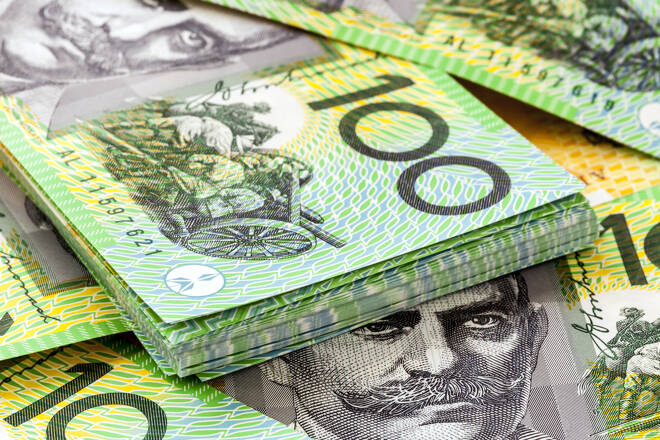Advertisement
Advertisement
AUD to USD Forecast: Aussie’s Battle Between China Relations and US Monetary Policy
By:
Australia-China trade relations offer a glimmer of hope for the Aussie, even as US monetary policy looms large.
Highlights
- The Aussie Dollar experienced a slight dip, settling at $0.63753 after a tumultuous Thursday.
- Recent trade data disappointments highlight the crucial nature of Australia-China relations.
- Diverging monetary policies between the RBA and Fed cast shadows over the AUD/USD’s short-term future.
Thursday Overview
The AUD/USD slipped by 0.07% on Thursday. Reversing a 0.02% gain from Wednesday, the Aussie Dollar ended the day at $0.63753. The Australian Dollar fell to a low of $0.63622 before rising to a high of $0.63950.
China – Australia Trade Talks Offer Respite
High-level talks between Australia and China will be the focal point today. Trade data from Australia and China were disappointing on Thursday. However, improving relations would bolster exports to China and support the AUD/USD.
Further updates and progress to remove existing curbs on Australian exports would be AUD/USD-positive.
China is Australia’s top trading partner. In 2022, trade-to-GDP was 45.75%, representing 20% of Australian jobs. Enhanced trade relations would boost the economy and jobs. For the RBA, better labor markets would drive consumption and inflation.
Fed Speakers Need Focus as Investors Reboot Fed Rate Hike Bets
After the latest service sector and labor market numbers, investors need to monitor Fed chatter.
The US ISM Non-Manufacturing PMI Survey revealed a pickup in prices, employment, and new orders. Significantly, the survey also showed a US economy capable of absorbing aggressive monetary policy measures to tame inflation.
However, FOMC members have remained silent, leaving the markets uncertain about the Fed view on interest rates. According to the CME FedWatch Tool, the probability of a September 25-basis point Fed rate hike stands at 8.0%. However, the chance of a November 25-basis point interest rate hike rose from 37.1% (Aug-31) to 47.7%.
Monetary policy divergence favors the US dollar, with investors expecting no further RBA interest rate hikes.
Short-Term Forecast
While improving Australia-China relations is AUD/USD positive, economic and monetary policy divergence favors the US dollar. The AUD/USD needs the Fed to discount the latest economic indicators to begin the recovery process.
AUD/USD Price Action
Daily Chart
The AUD/USD stayed below the $0.63854 resistance level this morning. The 200-day and 50-day EMAs sent bearish signals, with AUD/USD also sitting below the EMAs.
With no economic indicators to consider, updates from Beijing and dovish Fed chatter would support a breakout. A move through the $0.63854 resistance level would bring $0.64500 and the $0.64900 resistance level into view.
However, hawkish Fed commentary would bring sub-$0.63500 and the trend line into play. A break below the trend line would give the bears a look at the $0.62749 support level.
The RSI reading of 35.98 indicates room for more downside before the AUD/USD before entering oversold territory.
4-Hourly Chart
The AUD/USD remains below the 50-day and 200-day EMAs, sending bearish price signals. Despite hopes of improving trade terms between Australia and China, resistance at $0.63854 continues to leave the AUD/USD short of $0.64.
Dovish Fed commentary or stimulus talk from Beijing would support a breakout from the $0.63854 resistance level to target the 50-day EMA. However, downside risks remain, leaving the trend line and sub-$0.63 in view. Economic indicators from Australia and China signal deteriorating macroeconomic environments.
Considering the RSI at 40.12, the Aussie dollar can break below the trend line before entering oversold territory.
About the Author
Bob Masonauthor
With over 28 years of experience in the financial industry, Bob has worked with various global rating agencies and multinational banks. Currently he is covering currencies, commodities, alternative asset classes and global equities, focusing mostly on European and Asian markets.
Advertisement
